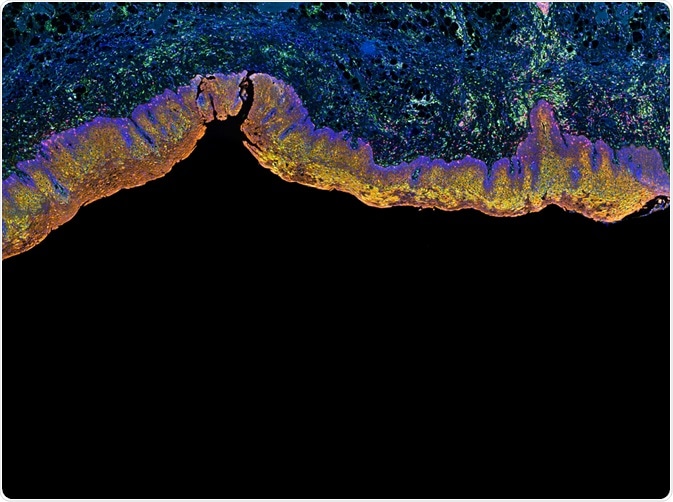E-FRET microscopy recently became a very popular intensity-based Fluorescence Resonance Energy Transfer (FRET) method for cell quantification. This technique reduces the photobleaching observed during the process of FRET.
 Carl Dupont | Shutterstock
Carl Dupont | Shutterstock
Why E-FRET?
During FRET, the excitation of the donor molecule is transferred to the acceptor, provided they are in close apposition to each other. After the transfer, the fluorescence of the donor is quenched, while the fluorescence of the acceptor is induced.
The ratio of the acceptor and donor fluorescence is then calculated before and after FRET. This method helps to visualize and quantify the interactions at a molecular level. However, a major limitation of FRET is photobleaching, which is a process where the fluorophore is permanently altered such that it can no longer fluoresce.
Also, the FRET indices depend on the optical parameters of the system on which it is performed. This renders it difficult and cumbersome to quantify and compare data between laboratories in different regions and/or countries.
FRET imaging system
In this system, the equipment is designed such that donor and acceptor emission can be simultaneously collected during the excitation process of the donor. This is done by using two CoolSnapHQ cameras attached to a Zeiss microscope with a beamsplitter and stationary emission filters.
The switching of wavelengths between the donor and acceptor emission is achieved using a DG4 galvo illuminator that is customized with a xenon lamp. The system is managed and the images are aligned with the use of Slidebook software. The following optical filters are used: 430/25 nanometers, 470/30 nanometers (for CFP) and 510/20 nanometers, 550/50 nanometers (for YFP).
E-FRET formulae
To understand the crosstalk between acceptor and donor molecules, acceptor-only and donor-only cells are imaged by employing a combination of following filters: donor excitation-donor emission (IDD), donor excitation-acceptor emission (IDA), and acceptor excitation-acceptor emission (IAA).
FRET efficiency (E) is a critical measurement that is used to measure FRET. The efficiency is defined as the proportion of the excited states of the donor that are transferred to the acceptor. The apparent efficiency of the FRET can be calculated by the following formula:
E app = (post I DD– I DD)/ post I DD
Where post I DD is the parameter post the donor photobleaching.
A parameter called G is calculated as well, which is a constant parameter for a specific imaging system and fluorophore. This parameter is independent of the FRET efficiency and can be calibrated when similar fluorophores and exposure times are maintained.
Correcting photobleaching
Photobleaching can lead to errors and loss of fluorescence during time-lapse and three-dimensional imaging. To introduce imaging-induced photobleaching, a parameter called Ecorr is introduced, which is the FRET efficiency in conditions when there is no photobleaching. Ecorr can be defined as ([XY]/[X total])/E, where XY is the fluorescence of the XY complexes.
Automated E-FRET
Recently, an automated E-FRET has been designed that comes with a user-friendly interface. The process of automation reduces the time of E FRET from 12 seconds to 3 seconds. First, the cells are located, and then "capture" button can be clicked to automatically perform the E-FRET procedure. Automated FRET can act as a convenient tool to perform quantitative FRET imaging of live cells.
Further Reading
Last Updated: Jun 20, 2019